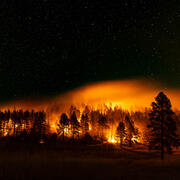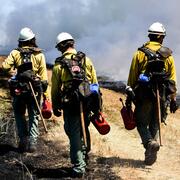Dr. Cameron Aldridge is a Supervisory Research Ecologist with the US Geological Survey, based at the Fort Collins Science Center, and Chief, Ecosystem and Landscape Dynamics Research Branch. He works in collaboration with the Natural Resource Ecology Lab at Colorado State University, as an Affiliate Research Scientist at NREL and an Affiliate Professor with ESS and GDPE. His research is diverse, but he is best recognized as one of the foremost sage-grouse ecologists in the world. He has a large research program focused on understanding the conservation and management of greater and Gunnison sage-grouse and their habitats. His research team includes both undergraduate and graduate students, research associates, post-doctoral fellows, and research scientists, all of which collaborate to understand why sage-grouse populations have declined, what major factors affect resource conditions and quality for sage-grouse, what drives population dynamics. The SAGE Wildlife Research Group works closely on these issues with state and federal partners, as well as NGOs, conservation groups and industry. More broadly, research in the SAGE Wildlife Research Group involves understanding animal-habitat relationships, with an emphasis on conservation ecology and population demography, with a focus on grassland, shrubland, and alpine ecosystems. Researchers in the lab are addressing co-existence of wildlife and energy, land-use change, and the effects of drought on conserving wildlife populations, their habitats, and the ecosystems they inhabit. Species that we are currently studying include songbirds and small mammals, snakes and lizards, and grouse, such as white-tailed ptarmigan and sage-grouse. We also work with plant communities and exotic invasive plants, understanding how external drivers such as climate, grazing, and land-use changes affect plant communities. We work across spatial scales, and use statistical and empirical modeling to answer these research and conservation questions, most of which have direct applications for conservation and management of the species and their habitats.

















